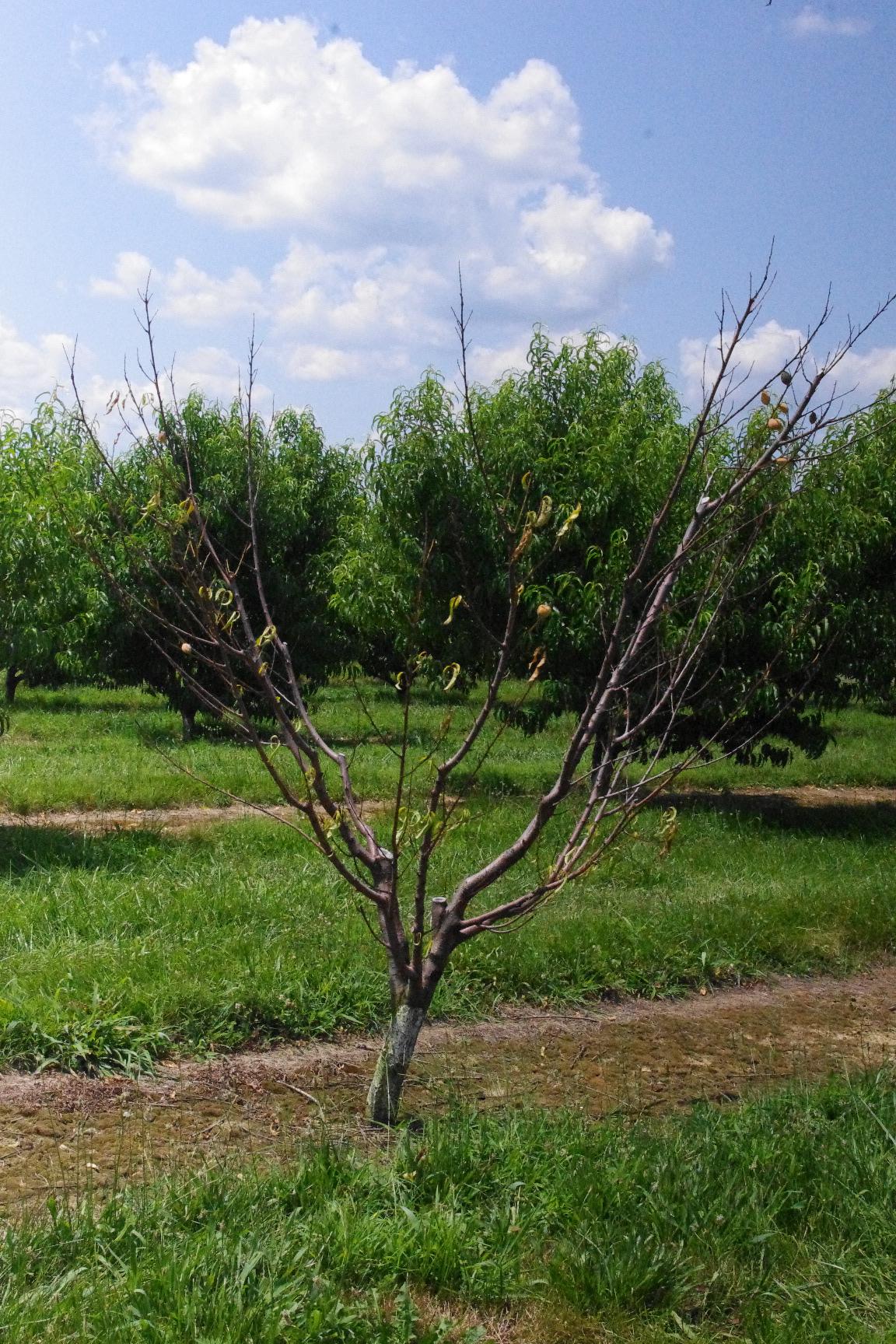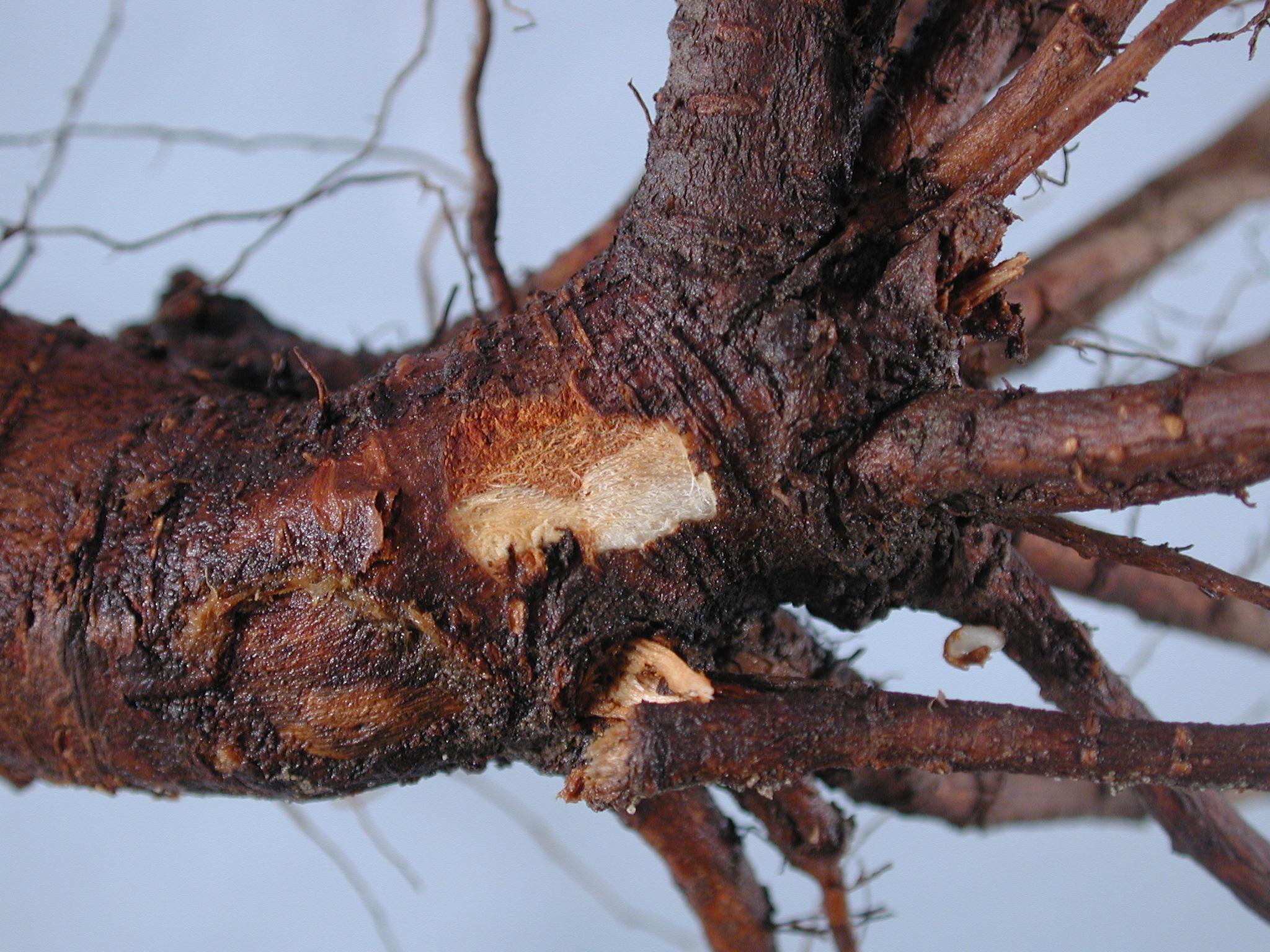Phytophthora Root Rot and Crown Rot of Peach
Return to Diseases
Phytophthora root rot and crown rot (Phytophthora spp.) is a water mold disease that affects roots and crowns of stone fruit and many other hosts. The first visible symptoms include wilt or death of entire trees in late spring or summer. In less severe situations, slow symptom development occurs with gradual chlorosis, wilting, and dieback; scorch along leaf margins can occur. Water-soaked, black, sunken cankers are often visible at bases of trunks. Scraping off the bark reveals a characteristic red coloration and necrotic (dead) cortical (inner) tissue. Necrosis sometimes expands upward. This pathogen favors soils with high moisture content, especially when soil is clay, poorly drained, or rain/irrigation keeps soil saturated for extended periods. Symptoms first appear on plants in low-lying areas and then spreads to nearby plants. High soil moisture accelerates pathogen reproduction and rate of infection. Some Phytophthora species have broad host ranges and may be present in soils prior to planting; other species may have more restricted host ranges and are likely introduced into planting sites via infected plant material. Once Phytophthora is established in soils, it persists for many years, even after host plants are removed.

Tree decline due to Phytophthora root and crown rot.
(Photo: John Strang, University of Kentucky)

Typical discoloration of root tissues infected with Phytophthora root and crown rot.
(Photo: M. L. Putnam, Oregon State University)
Management:
- Select a growing site with good soil drainage or plant on raised beds.
- Rotate with non-susceptible crops.
- Consider resistant rootstocks.
- Fungicides may suppress disease on less symptomatic plants, as long as fungicides are applied regularly.
